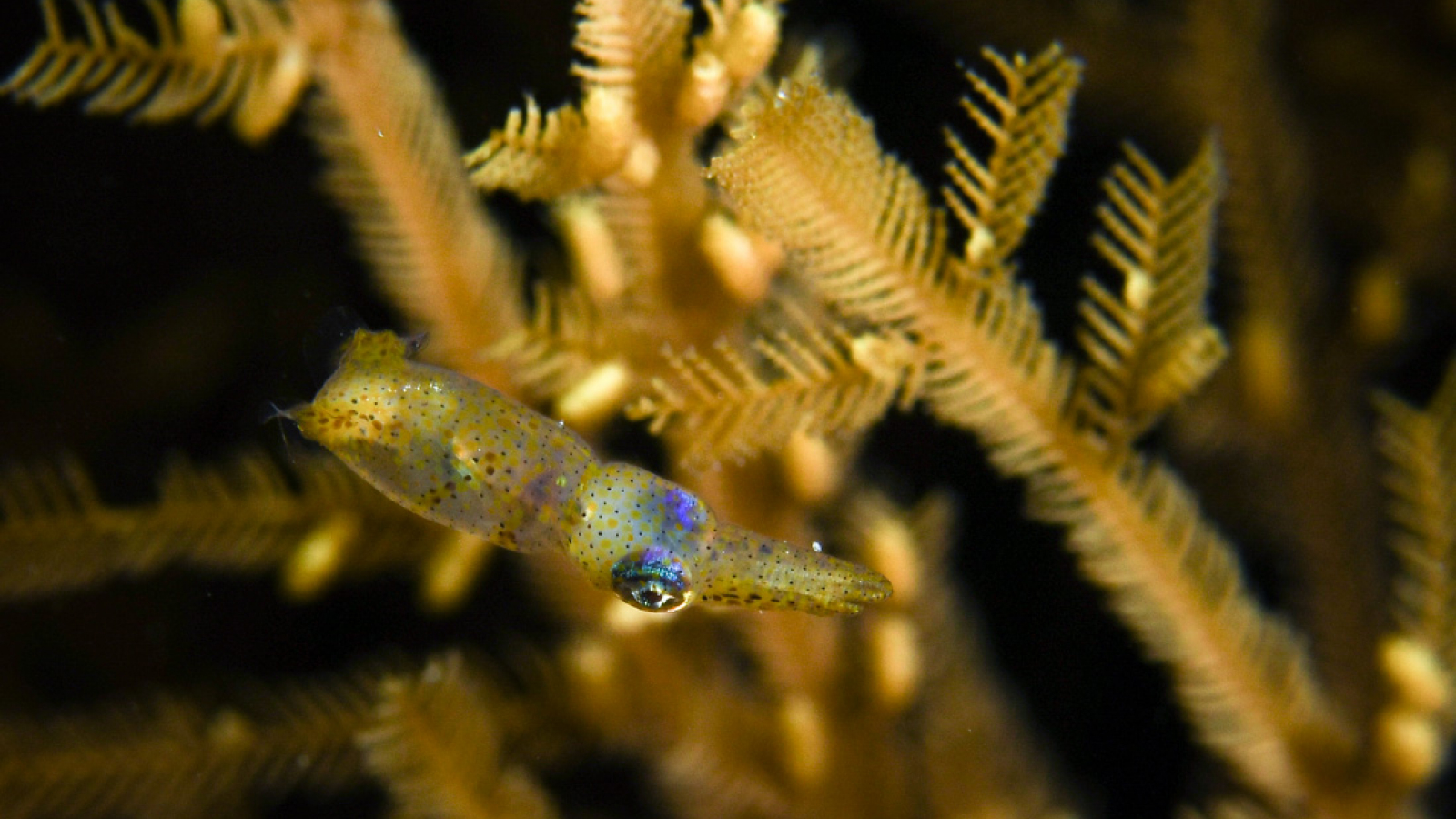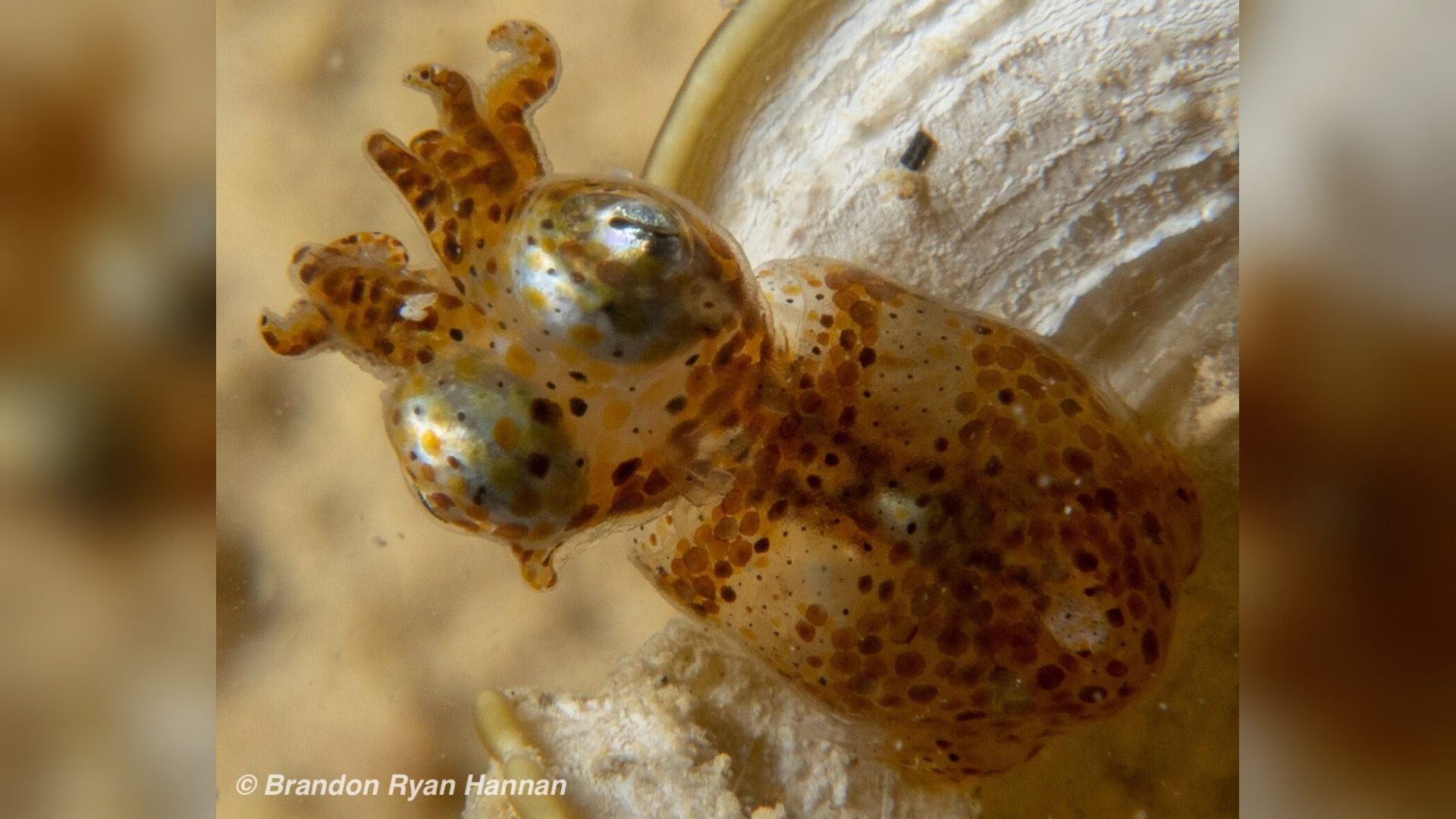Adorable, newfound pygmy squid species named after Japanese forest fairies
Two new species of pygmy squid have been discovered off Okinawa and named after mythical creatures.

Two new species of pygmy squid have been found in the subtropical waters of a Japanese island. These cephalopods, which are smaller than paper clips, find refuge in the coral beds and seagrass fields of Okinawa and take their names from- fairies in Japanese folklore and martial arts.
The two newly discovered creatures were described in a study published last month in the journal Marine Biology.

Related: Watch a see-through squid with demon-like eyes swim in Alaska's deep waters
The Ryukyuan pygmy squid (Idiosepius kijimuna) derives its species name, "kijimuna," from a mythical creature in Okinawan folklore. Kijimuna are said to be red-haired, childlike creatures who live in banyan trees. Similar to kijimuna, I. kijimuna is slightly red and lives in the seagrass forests close to shore, up to 6.6 feet (2 meters) below the surface. Although the species was found back in 2018, researchers had too few specimens to write a formal description at that time, the team wrote in the study.
The second species, the Hannan's pygmy squid (Kodama jujutsu), takes its name from underwater photographer Brandon Ryan Hannan, who originally found the creature clinging to the underside of a coral reef. This species represents a whole new genus, Kodama, also named after a mythical being. According to the new study, Kodama are ghostly, rounded tree spirits believed to dwell in ancient forests. Their presence is believed to be a sign of a healthy forest.
I. kijimuna swims smoothly, while K. jujutsu bobs along with its arms splayed outward, in order to catch hapless shrimp. These predatory water acrobatics led to the species name "jujutsu" (also spelled "jujitsu" or "jiujitsu"), a martial art.
"Jiu-jitsu revolves around grappling and using your opponent's strength, and the Kodama jujutsu preys on shrimp larger than itself by grappling with its small arms," co-author Jeffrey Jolly, of the Marine Climate Change Unit at the Okinawa Institute of Science and Technology Graduate University, said in a statement.
Get the world’s most fascinating discoveries delivered straight to your inbox.
Collecting these tiny creatures was tricky; both species have a maximum length of about half an inch (1.2 centimeters).
"There are so many other things to look at, that finding a small squid the size of a pinky fingernail is not easy," Jolly said. Not only are both teensy squid nocturnal , but according to the study, the Ryukyuansquid appear only in the winter. Their whereabouts during the summer months is a mystery.
Though these sea-dwelling creatures were discovered recently, land use threatens their habitats.

Elise studied marine biology at the University of Portsmouth in the U.K. She has worked as a freelance journalist focusing on the aquatic realm.
- Tia GhoseEditor-in-Chief (Premium)


